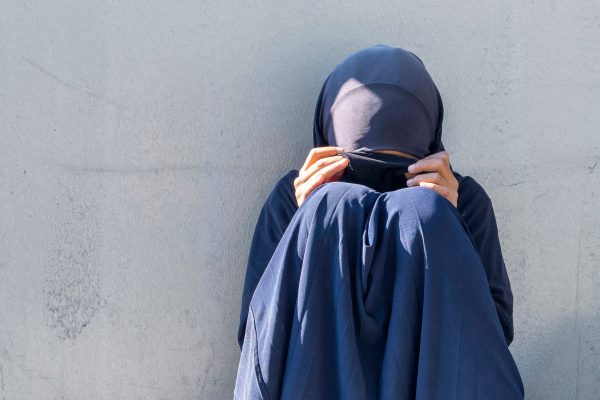The report found an overwhelming majority (74.3%) feel women are at most risk of experiencing Islamophobia in the US.
The report found an overwhelming majority (74.3%) feel women are at most risk of experiencing Islamophobia in the US.
On Wednesday 29 September 2021 a report released by the Othering & Belonging Institute, amongst many other findings, reported Muslim women being more likely to experience Islaoaphobia than their male counterparts.
The Othering & Belonging Institute is made up of researchers, community leaders, policymakers, artists and communicators that do work related to marginalised communities. In their own words they “engage in innovative narrative, communications, and cultural strategies that attempt to reframe the public discourse around marginality and inclusion and respond to issues that require immediate and long-term action.”
The full report is available to download on their website.
The Goal Of The Report
The survey ran from October 14 to November 2 2020 and saw over 1,100 US-based Muslims respond. The goal of the report was to “assess US Muslims’ views on the impact of Islamophobia on US Muslims, their worldviews on racial equity, their sense of belonging and their views on citizenship, among other issues.”
In addition, the report sought to evaluate the impact of othering and discrimination US Muslims face because of their religious affiliation. For those who may not be aware, ‘othering’ means to label an individual or group as being different from the norms of society. Many groups believe Islam and Muslims are not compatible with modern society – this is called othering.
Why Was The Research Conducted?
More often than not, the level and extent of Islamophobia is assessed by relaying incidents of attacks, media reports and other statistics i.e. relying on secondary data. For example, this report on Muslim hate crime post-Brexit (which also incidentally concluded Muslim women being the likelier target of hate). The present report looks at the extent of Islamophobia through primary research – that is asking Muslims to share details of what they’ve experienced to help paint the picture of Islamophobia – in this case in the US.
Participant Demographics
Participants were carefully selected in order to hear the voices of Muslims from all diverse backgrounds. Participants by ethnic background:
- South Asian – 35.6%
- Arab – 25.2%
- African America/Black & Afro-Arab – 8%
- White or European – 7%
- Central and East Asian – 6.9%
- Multiracial – 1.2%
- Hispanic of Lationo/a/x – 1.1%
- Other – 14.2%
Additionally, 51% of participants were men and 49% women, respectively.
Key Findings
A range of questions was asked to deduce the scope of Islamophobia. A large majority (over 60%) believe Islamophobia is a ‘very big problem’ in the USA. There was no difference in this majority when broken down by age or gender. 34.5% believe it is “somewhat a big problem” and the rest do not believe it exists or were unsure.
Moving onto the groups that are most likely to experience Islamophobia, the report found an overwhelming majority (74.3%) feel women are at most risk and children are considered to be least at risk (6.5%).
A little over half of the respondents (55.4%) had a personal experience with Islamophobia yet only a minority (13.5%) reported the incident to the authorities. This could be for two reasons. One because they don’t know how to (around 66% of respondents were unsure on how to report it) or because they feel the authorities are not to be trusted (53.3% responded saying they’ve been unfairly treated by law enforcement due to their religious identity). Going above to policymakers and local and state governments 62.7% admitted that they themselves, or family members, friends, or members of their community, have been affected by federal and/or state policies that disproportionately discriminate against Muslims.
When asked if they would be willing to enter into a dialogue with policymakers and congresspeople to help change the narrative 76.5% said they would feel uncomfortable doing this.
Respondents added that the media compounds the fear of Islamophobia because their portrayal of US Muslims is ‘unfair’ (97.5%).
Concealing of religious identity is also a common occurrence amongst participants with 32.9% admitting to hide or try to hide their religious identity and a large majority (88.2%) saying they would be careful of their speech and actions due to fear of how people may react. Young people were most likely to conceal their religious identity.
The fear of Islamophobia affects relationships with non-Muslims as well. Almost 80% said they are unable to build social connections with non-Muslims due to Islamophobia with 72.9% believing overall relations between Muslims and non-Muslims in the US is ‘friendly.’
Interestingly, many Muslims believe Islamic values are consistent with US values and there can be a sense of co-existence (79.4%) and diversity is what makes the US stronger, not weaker, according to nearly half of the respondents with pretty much all participants saying that it’s a good thing the US is made up of different cultures. Participants also argue that immigrants are ‘doing enough’ to adjust to life in the US (86%).
Concluding Thoughts
Overall, it can be said that Islamophobia is a very real phenomenon that deeply affects a Muslims emotional and psychological state with 93.7% of respondents saying their mental wellbeing is affected by Islamophobia, despite their best efforts to integrate and ‘feel’ American. There is also an overall reluctance of Muslims (due to fear) to help bridge the gap between policymakers or the ordinary non-Muslim US resident. In short, Islamophobia is vicisous cycle. The presence of Islamophobia puts a sense of fear into Muslims, causing alienation and possible further Islamophobia.
The original report can be found here with further analysis and comments from the organisers available here.





